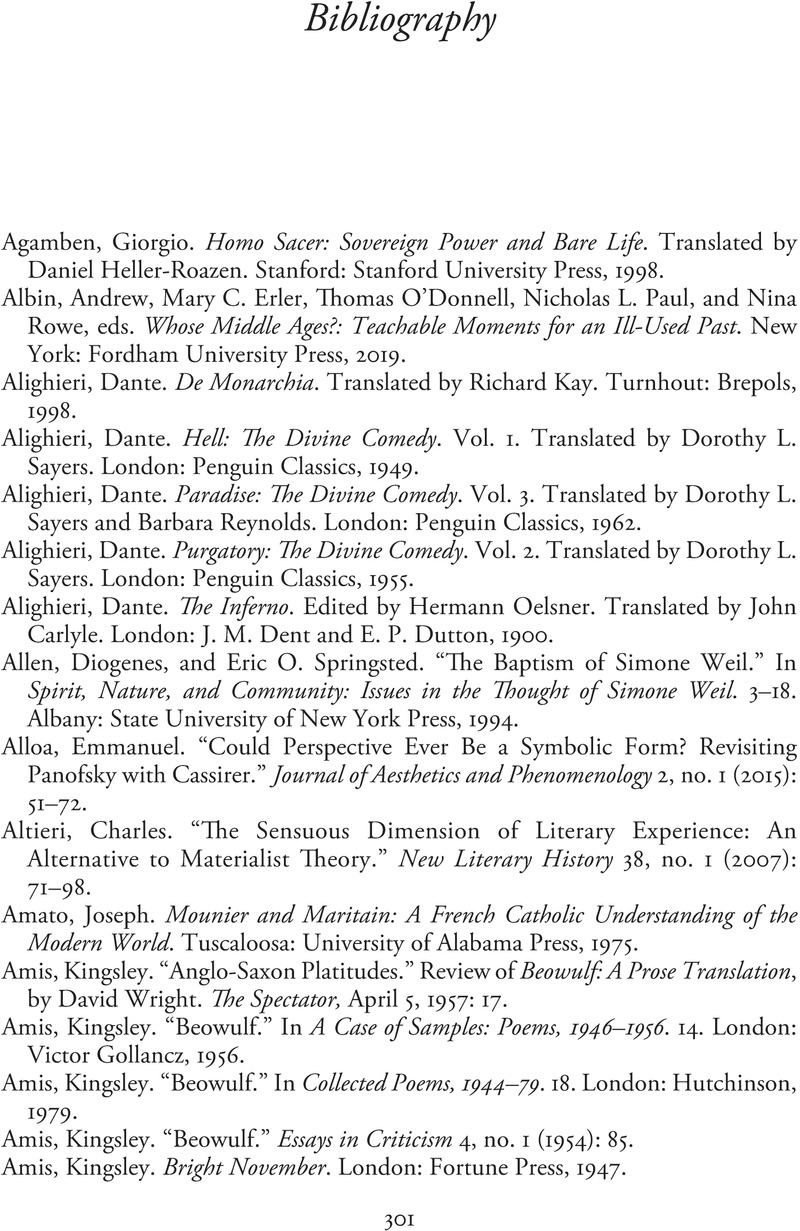Bibliography
Published online by Cambridge University Press: 07 October 2022
Summary

Information
- Type
- Chapter
- Information
- Thinking of the MedievalMidcentury Intellectuals and the Middle Ages, pp. 301 - 336Publisher: Cambridge University PressPrint publication year: 2022
